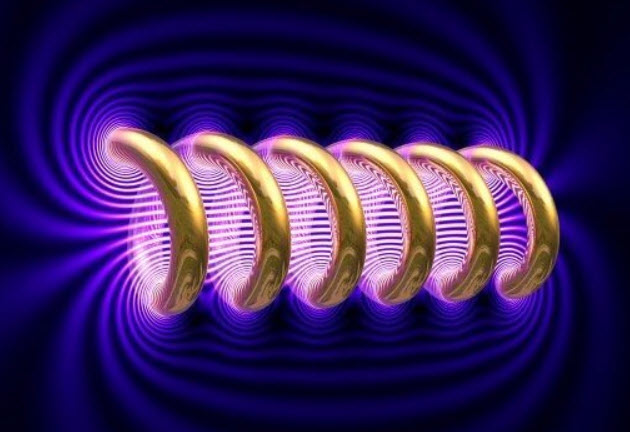What is magnetism? How can a current be produced by magnetism? How do we use mechanical energy to produce electric current?

Cells and batteries are often convenient sources if electrical energy. For some purposes, we use them a great deal. But if we had to rely entirely on current produced by chemical action, we could not afford to operate most of our common electrical appliances. The metals and chemicals used up in the cells would cost too much. Some other way of producing current had to be found before we could have electrical energy in the large amounts that we need today. About 1830, two scientists working separately discovered how to produce electric current by magnetism. One of them was an American named Joseph Henry and the other was an Englishman named Michael Faraday. From their discovery, the electric generator was developed.
As you have learned, a generator is a machine that changes mechanical energy into electrical energy. Generators can produce large amounts of electrical energy much more cheaply than cells can. For example, it costs anywhere from seven to thirty times as much to get electrical energy from a dry cell as from a generator. When a large current is needed for very long, generators are nearly always used to supply it. More than 99 per cent of all the electrical energy now used in our country comes from generators. To understand how they supply current, you must first have some facts about magnetism clearly in mind.
Magnetism is a form of energy. Because of this energy, a magnet exerts a force. It attracts magnetic materials, such as iron and steel. The places where the force of a magnet is strongest are called its poles. Every magnet has two poles, usually near the ends. One is called the north pole, or N pole. The other is called the south pole, or S pole. The space around a magnet where the force acts is known as its field of force, or magnetic field. Here iron filings arrange themselves in a pattern made up of a series of lines. We call them lines of force, because the force of a magnet seems to act along these lines. They pass between the poles through the field of force. So the lines of force show us how the magnetic field is arranged.
When an electric current flows through a wire, the wire is surrounded by a magnetic field. The field of force is much stronger where the wire is wound into a coil. We can then use it to magnetize pieces of iron and steel, or make them into magnets. Steel and some other alloys keep their magnetism for a long time. They are used to make permanent magnets, such as bar and U-magnets, Iron is used to make temporary magnets, because it soon loses its magnetism.
The most useful type of temporary magnet is an electromagnet. This is just a coil of wire wound around a core, usually made of iron. It keeps its magnetism only as long as the current is flowing through the coil around the core.
Electrons tend to move along a wire wheneva the wire cuts across lines of force in a magnetic field. The lines of force may be cut by moving either the wire or the magnet. Which one is moved makes no difference. Electrons will move just the same. As they move along the wire, its ends become charged. The end that gains electrons has a negative charge, while the end that loses them has a positive charge. When the wire is part of a closed circuit, electrons repel each other from the negatively charged end through the circuit toward the positively charged end, which attracts them. The stream of electrons moving through the circuit is an electric current. It keeps on following as long as the circuit is closed and lines of force are still cut.
The electrical pressure that makes the current flow depends on how many lines of force are cut in a certain time. The more lines of force cut in 1 second the greater the pressure and the larger the current will be. To provide a pressure of only 1 volt, 100 million lines of force must be cut each second. Much higher voltages are nearly always needed. So many more lines of force must be cut. There are three ways to do this: (1) by moving either the coil of wire or the magnet faster, (2) by using a stronger magnet with more lines of force in its magnetic field, and (3) by having more turns of wire in the coil. All three ways are used in generators that supply large currents. A generator is just a machine for making wires cut many lines of force very fast. Mechanical energy used to turn the generator is changed into electrical energy by magnetism.